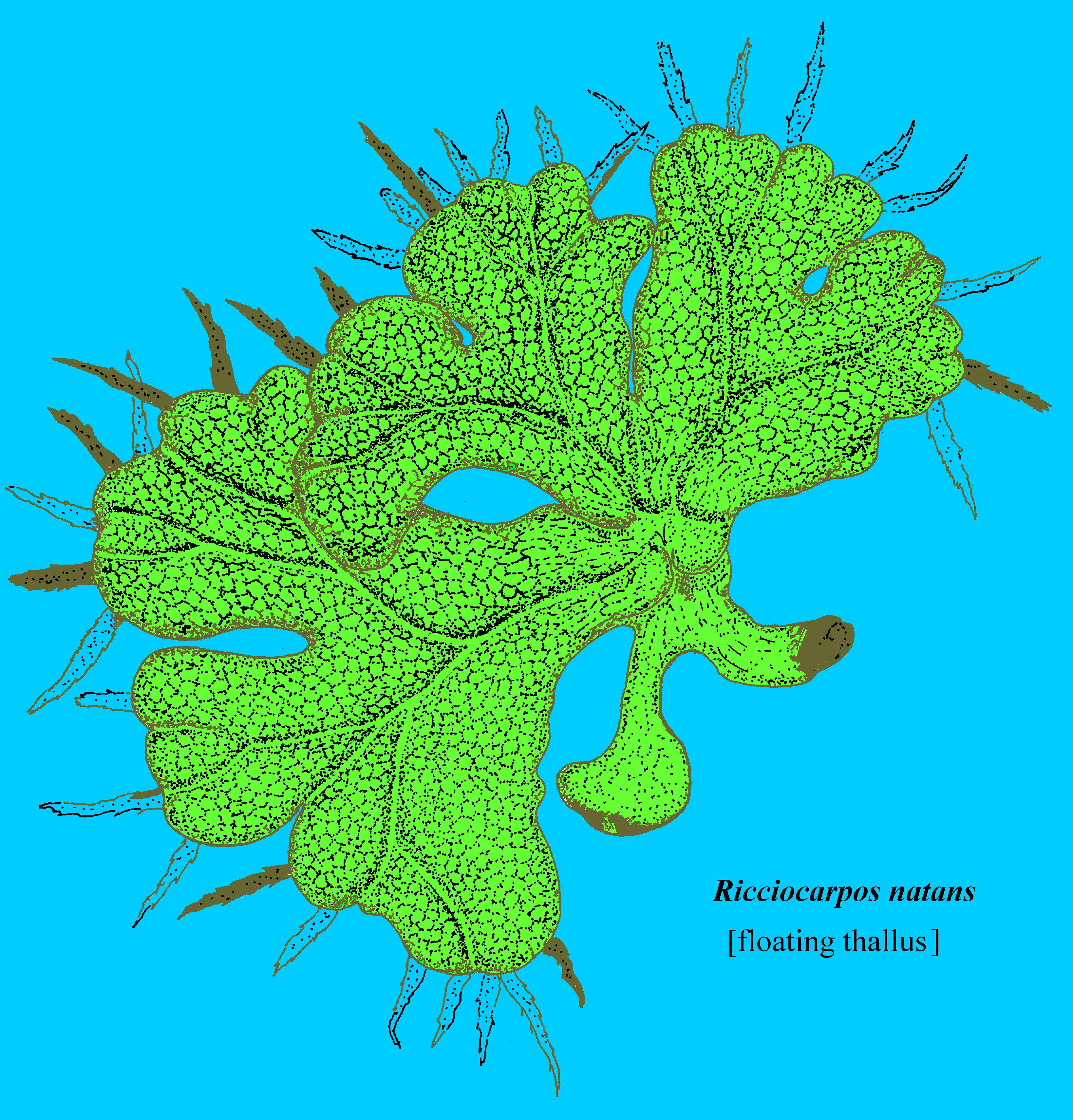ESSEX BOTANY AND MYCOLOGY GROUPS
|
|
|
|
|
|
|
|
|
|
|
ESSEX BOTANY AND MYCOLOGY GROUPS |
|||||||||
|
Ricciocarpos natans:
Ricciocarpos natans
(L.) Corder
![]()
![]()

|
Scroll down for detailed records An unmistakeable floating liverwort of neutral to highly base-rich stagnant ponds and abandoned canals, frequently in association with Riccia fluitans. Very rare and probably decreasing in the U.K., but virtually world wide in distribution and in some countries very abundant. Not found in Scotland, 56 x 10km sq records post 1950 in England/Wales/Ireland, but it seldom persists for more than a few years at any one site, so these figures give an over estimate of its occurrence at any one time. The thalli fragment into 1-2 furcate portions, that sink to the bottom in late autumn, and rise up again in the spring, though like Riccia fluitans they may not do so every year. If the pond dries up during the growing season, the stranded thalli continue to grow, but retract their floatation scales and may narrow down their bifurcations to resemble Riccia fluitans. Sporophytes are said to be very rare in Europe and there do not seem to be any records for the U.K. It is therefore a mystery as to how it is dispersed in this country. Fragments of thalli on muddy birds feet seem the most likely source of propagules; though odd spores leading to single sex clones might be brought over in this way from parts of the world where it does produce sporophytes. In America, it is apparently monoecious, and fruits abundantly. Smith suggests that our clones may be dioecious, which might explain the lack of sporophytes. Paton however, notes that sexual organs have not been found in Britain either. Elsewhere, the antheridia and archegonia apparently occur along the mid-line of the lobes, and the sporophyte is spherical and immersed in the upper surface, the mature spores being blackish-brown. Being so uncommon a plant, it is possible that sexual organs have been overlooked. It has been exterminated on Epping Forest by the dredging of first of all Earl’s Path, and then Goldings Hill Upper Pond. Not apparently by removing all the thalli, but by changing the nutrient status of the water. It is seems likely to meet the same fate in Dagnam Park, where ponds are similarly being dredged to reinvigorate them. Fifteen 1km sq records from Essex, though it is sporadic and seldom likely to be present at more than a couple of sites in the county at any one time.
|
|